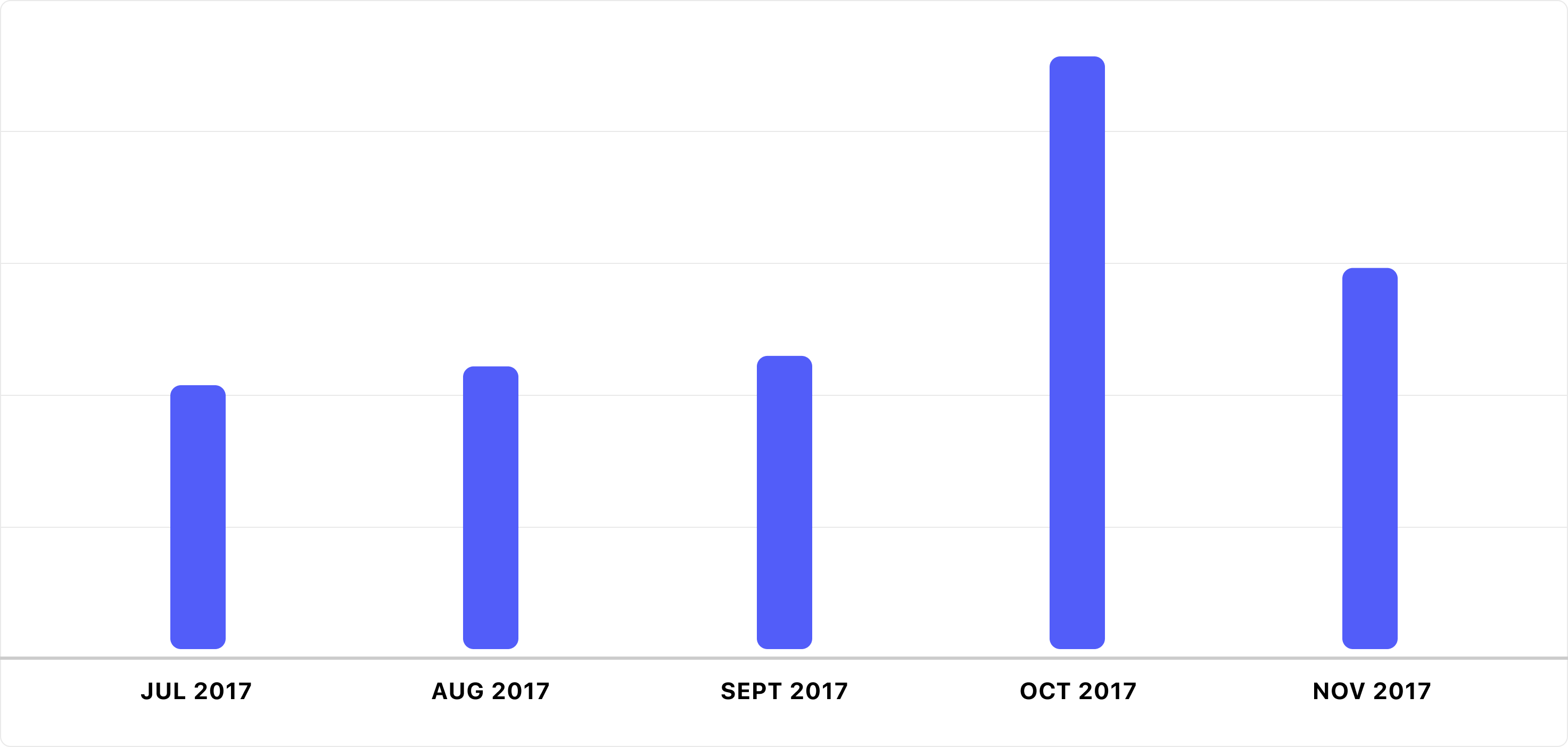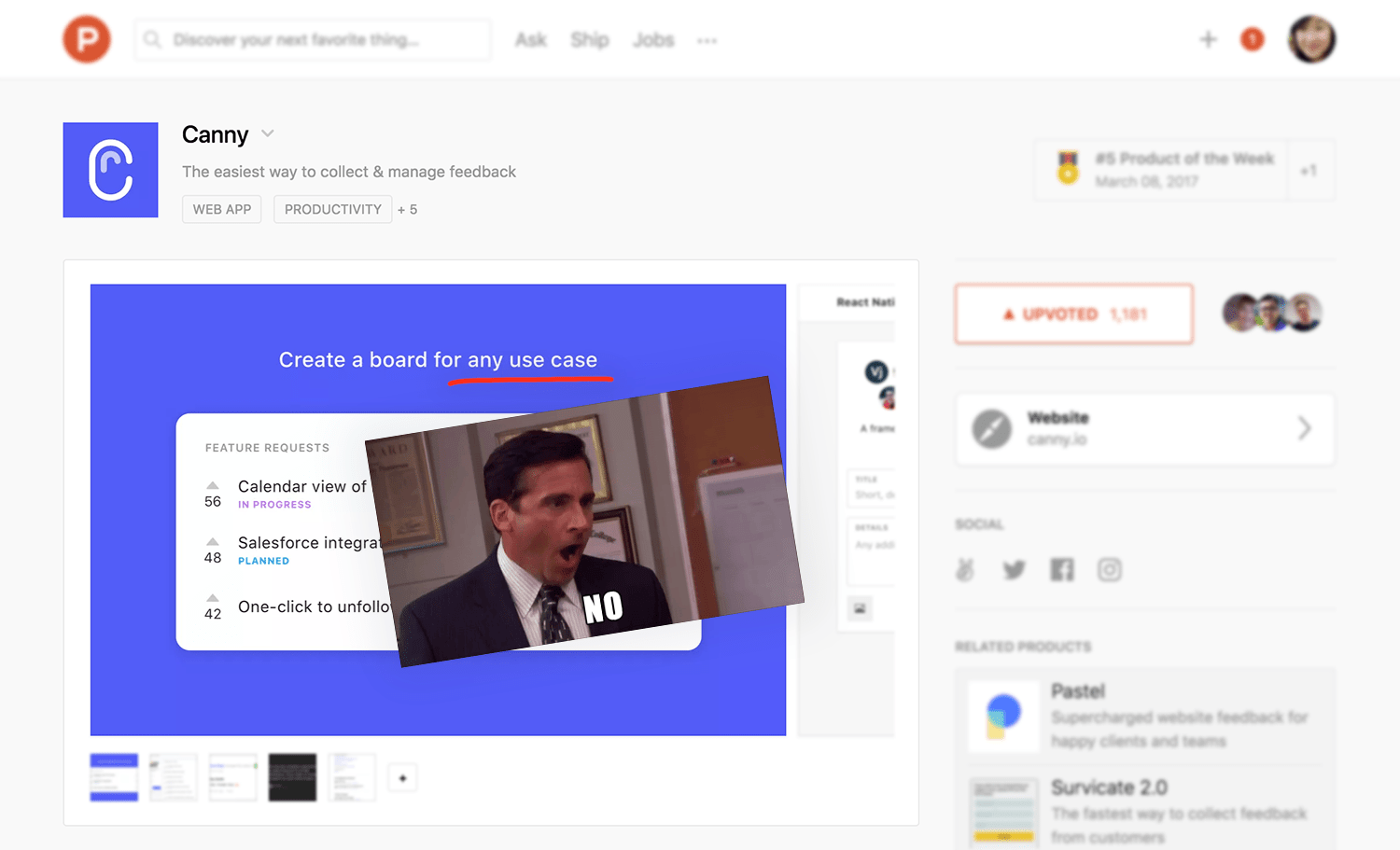It’s officially been a year since we launched our SaaS startup, Canny. We’re proud of how far we’ve come, but we’d definitely do some things differently. I’ll share the highlights of our journey so far, and some of our biggest learning lessons.
In case you don’t know already, Canny is a user feedback tool. We help software companies track feedback to build better products.
Happy Birthday, Canny! 🎂🍾🎉😃
The Journey
In the past year, Sarah and I:
- Launched Canny on Product Hunt. We got thousands of website visits, 350+ trial sign-ups, and a few dozen paying customers. Huge win!
- Moved out of our cozy apartment in San Francisco to become digital nomads. We lived and worked from 14 cities in 10 countries: US, Canada, UK, France, Hungary, Germany, Spain, Hong Kong, Vietnam, and Thailand.
- Got 142 paying customers. This includes several leading companies like Flexport, MongoDB, Compass, and Bench.
- Grew Canny from $0 to over $100k ARR. About 80% of that is profit, which means we can afford to start hiring fantastic people!
- Started hiring a remote team. We’re hiring a Content Marketer and a Full-Stack Engineer. We’re up to our necks in applicants and we’ve done a dozen or so interviews.
- Raised $0. We’re bootstrapped and proud – no outside funding needed.
What a year! Can’t wait to see what the next one has in store for us.
Lessons Learned
Here are the top 5 things we wish we could go back and do differently. We’ve come a long way, but there’s so much room for improvement.
1. Identify what kind of SaaS you are
There are two major SaaS sales models: low-touch and high-touch.
Low-touch SaaS is about volume.
- Your product costs $10 to $500 per month
- People need very little interaction with your team to become customers
- Your landing page call-to-action is “Sign up for a free trial”
- Your primary growth channel is marketing
High-touch SaaS is about building a sales engine.
- Your product costs north of $6k per year
- People talk to your sales team to learn about and purchase your product
- Your landing page call-to-action is “Request a demo”
- Your primary growth channel is sales
The reason you should pick one (to start out with) is that it focuses you. If you sell to a specific type of customer, in a specific way, it simplifies everything. Which features you build, how your pricing works, what you optimize your landing page for, and more.
Rather than doing alright at both, you can be excellent at one. Startups don’t win by being alright, they win by being excellent.
2. Simplify everything
You can simplify more than just your sales model. You should strive to simplify everything your users interact with. From the top of the funnel to the bottom: your content, ads, landing page, pricing, onboarding, product, and more.
People are busy. They have short attention spans. They’re constantly being targeted by thousands of corporate agendas. If you make something the slightest bit difficult, they won’t take the time to figure it out. They’ll drop off. They’ll stop reading your blog post. They’ll close your landing page. They’ll quit using your product.

But if you make it easy, they’re far more likely to engage. And they’ll remember that “Canny is easy to use”. Just like they remember that “dealing with Comcast is my worst nightmare”. In the early days, you need loyal fans. You need people to love your company, otherwise growth will be an eternal grind.
We wouldn’t have the traction we do today if we hadn’t focused on simplicity. Customers regularly reach out, telling us they love how straightforward our product is. Blog readers mention how our writing is easy to read. This translates into more awareness, trials, customers, and inevitably success.
3. Prioritize marketing
Since we’re low-touch SaaS, marketing is our primary method of acquiring new customers. Yet we only spent about 5-10% of our time on marketing last year. Not nearly enough.
Part of the problem is that Sarah and I are a designer and engineer. Building product is what we enjoy doing, and what we’re best at. That’s why we spent so much time on product.
Yet in October when we wrote a blog post about how we got to ramen profitability, our trial sign-ups doubled. That’s right, doubled. Our trial-to-paid conversion rate stayed constant, meaning we grew twice as fast that month. From a single blog post.

Why aren’t we doing this all the time?! Because it’s hard. Because we aren’t good at it. Because it doesn’t feel natural.
Excuses. If you’re looking to only do what you’re good at, don’t start a company. Dedicate time to what will move the needle, not what’s comfortable. You’ll learn a heck of a lot this way too.
4. Narrow your target audience
This is our first time running a SaaS company. In the early days, we were happy just to have paying customers. We sold to anyone we could: consumer apps, open source, SaaS, marketplaces, games, and more. We didn’t really see it as a problem.
More customers = More money = We’re doing better. Right?
Wrong. The problem is that it makes your product and messaging unfocused. Our consumer customers need different features than our SaaS customers. They also resonate with different messaging on our landing page and in our product. By trying to serve both, we did a worse job than serving either one alone.

The consumer customers ended up churning more. It turns out that feedback is more valuable to SaaS companies because it drives revenue. We’ve since narrowed our focus.
Of course, hindsight is always 20-20. We didn’t know who we should sell to until we tried selling to everyone. If you don’t know who your target audience should be, you don’t understand your users well enough. Get out of your office and talk to them.
5. Ruthlessly manage your time
In a startup, there’s an endless list of things you could spend your time doing. How do you most efficiently spend your time?
The worst part is that many activities feel productive but really aren’t. Take email, for example. If every time you get an email, you drop what you’re doing to deal with it, you’ll spend your entire day on email. Obviously, falling behind is a problem, but you can dedicate chunks of time to work through it. Context switches are expensive.
Another culprit is building features that aren’t mission critical. Sometimes a customer asks for a feature, and it’s tempting to say “we’ll have it done today”. We’ve done this many times.

We wanted to impress people and deliver value as fast as possible. It felt right, but we ended up building a lot of features that weren’t useful to many people. This wasn’t an efficient use of time. It’s much better to pick one high-level strategy, and patiently execute it.
The best way to solve this is to set measurable goals. What is your team trying to accomplish this year, half, quarter, and month? What must be done to hit these goals? What can I work on today that will move the needle the most? Thinking this way helps you make unbiased decisions about how to spend your time. Otherwise, you’re just acting in the heat of the moment: inefficiently.
Be helpful
On top of these 5 things, remember that you are in the business of helping people. The reason people buy your product is because it solves their problem. The reason people read your blog is because they want to learn something and be more successful.
The more you can get in the mindset of helping others, the better your company will do. I wrote this article because I think it would have been insanely valuable to read a year ago. I hope it helps you now.
This past year has been a blast, and we look forward to many more. We’ll keep sharing what we learn as we go.





Andrew- This blog post happened to come up in my Google Now feed and after reading the post I quickly subscribed to your blog and have read through all of your and Sarah’s posts. They are fantastic!
I am just getting started building a B2B SAAS for the Ecomm space, so everything you are writing about is super relevant to what I am doing.
Congrats on your success so far! I am looking forward to reading more about your continued success and using Canny for my product after I launch.
Hey Steve! Glad you enjoyed our posts – we need to write more of them 🙂
PromoPrep looks useful, best of luck with your upcoming launch!
Hi, so no plans of raising money at all? What about YC? You guys stopped applying? Thanks for the great content and best of luck!
Congrats on 100K ARR! VEry inspiring!
How people fidning Canny? Is it SEO or word to mouth?
Hey Andrey, cool to see you reading our stuff. I’ve definitely seen you around in the nomad / maker communities.
Lots of organic (via “Powered by Canny”) because our product is used by our customers’ customers. Also a handful of the other usual SaaS channels (FB/Google ads, content, Quora, etc). Focusing hard on inbound + low-touch + self-serve, not outbound.
good question!
Well done with this. Great blog post. I only have something in my mind after reading it. Sounds like you want to grow already, but it seems premature to me. Why not stay small? 100k ARR seems very low to start hiring 2 new people. What’s your point of view?
Thanks Francesco! This was a bit over a year ago now and we’ve hired 3 people since then. Our goals are aggressive. We had a lot that we wanted to do and we couldn’t do it as quickly alone.